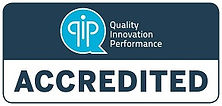
Referrals - We accept all referrals
Appointments
1800 4 SLEEP (75337)


Our referral can be found in Best Practice Software in Templates
Instructions to install Medical Director Template
-
Download the RTF file above – DO NOT OPEN THE FILE
-
In Medical Director go to Tools -> Letter Writer -> File -> Modify Template ->Template Name -> Import -> “Find downloaded file” -> Import
-
Save Name as #ERSA Lung Function and Sleep Study Referral
Referral Guide
Sleep Studies
The Epworth Sleepiness Scale (ESS)
The Epworth Sleepiness Scale (ESS) is a tool used to assess daytime sleepiness through a brief questionnaire. This can aid in identifying sleep disorders. Developed by Dr. Murray Johns at Epworth Hospital in Melbourne, Australia, the scale was first introduced in 1991.
Patients rate their likelihood of dozing off in eight different common scenarios on a scale from 0 to 3, indicating increasing probability. The total score, obtained by summing the ratings for all eight questions, ranges from 0 to 24. Scores between 0 and 7 are considered normal, while scores from 8 to 24 suggest the need for professional medical advice. Specifically, scores of 11-15 may indicate mild to moderate sleep apnea, and scores of 16 or higher may suggest severe sleep apnea or narcolepsy. Some questions on the scale are better indicators of specific sleep disorders, but additional tests may be necessary for an accurate diagnosis.
Applicants should evaluate their likelihood of falling asleep during the listed activities.
0 – Would never dose 1 – Slight chance of dozing 2 – Moderate chance of dozing 3 – High chance of dozing
-
Reading
-
Watching TV
-
Sitting inactive in a public place (e.g. cinema, meeting)
-
As a passenger in a car for an hour without a break
-
Lying down resting in the afternoon when circumstances permit
-
Sitting and chatting to someone
-
Sitting quietly after lunch (not having had alcohol)
-
In a car when you stop in traffic for a few minutes
Total Score /24
OSA50 Questionnaire
The OSA50 questionnaire was developed by a group of Australian sleep medicine researchers who aimed to create a brief, four-item OSA screening tool for use in general practice. They established that the four items that best predicted a diagnosis of severe OSA (ie AHI ≥30 events/hour) were:
-
obesity (by waist circumference)
-
snoring
-
witnessed apneas
-
age ≥50 years.
Weightings from results of logistic regression analyses were used to create a simple screening tool with a maximum score of 10 points. An OSA50 score ≥5 points was found in a validation sample to have 94% sensitivity, with 31% specificity for identifying moderate-to-severe OSA.
Table 1. OSA50 questionnaire If yes, score
Obesity/Waist circumference* (>102 cm for males or >88 cm for females) 3
Snoring - Has your snoring ever bothered other people? 3
Apnoeas - Has anyone noticed that you stop breathing during your sleep? 2
50 - Are you aged 50 years or over? 2
Total score / 10 points
*Waist measurement to be measured at the level of the umbilicus (males 102 cm = size 40 [inches] and females 88 cm = size 16)
Ref: Chai-Coetzer CL, Antic NA, Rowland LS, et al. A simplified model of screening questionnaire and home monitoring for obstructive sleep apnoea in primary care. Thorax 2011;66(3):213–19. doi: 10.1136/thx.2010.152801.

